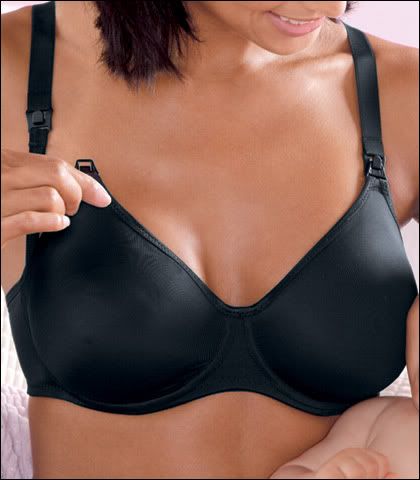Nursing Bras FAQ 101
How to choose the right Nursing Bras?
Answer: Breast changes begin in the first trimester of pregnancy, and most mothers outgrow their pre-pregnancy bras right along with their non-maternity jeans. If you're buying new bras during pregnancy, go ahead and buy nursing bras. These may not fit immediately after birth, when your breasts are swollen, but they'll fit at some point in your breastfeeding career.
Where to buy Nursing Bras?
Answer: You can buy nursing bras online as well in the maternity section of department stores. You can pay discount store prices or pay a lot more for a higher quality garment. There are also many catalogs for new mothers that sell nursing bras along with other baby and breastfeeding products.
Looking for what kind of Nursing Bras?
Answer: Nursing bras are designed with cups that open. You can open the flap on the cup so that baby can nurse while the rest of the bra stays in place. Here's what to look for when you shop:
- Flaps should be easily opened with one hand. If you can refasten them with one hand, that's even better. Remember, your other arm will be holding a hungry baby. For discreet nursing in public, choose a bra with fasteners that you can open without looking at them.
- The bra should support the breast from beneath even when the cup is open. This makes feeding more comfortable and re-closing the bra less of a struggle.
- Avoid bras that open completely at the front for a feeding. You'll have a hard time wrestling your breasts back into place when you're done nursing.
- Nursing bras should fit comfortably. Bras that are too tight can leave you vulnerable to plugged ducts and breast infections in the parts of the breast where straps or underwires block the flow of milk.
- Avoid underwires, especially in the early postpartum weeks. If you do choose an underwire bra, be very particular about the fit. The breast's milk-producing tissue extends all the way back to your rib cage and up into your armpit. An underwire may obstruct the milk ducts in this area--besides poking and annoying you. (Underwire bras can be miserable to wear during pregnancy. The wires dig into your upward-expanding abdomen whenever you sit down.)
- Cups should be made of a breathable fabric. This is usually 100 percent cotton, although some of the newer synthetics also allow the skin to breathe. Other synthetics trap moisture next to the nipples and encourage bacterial growth and soreness. Don't buy a bra with a plastic lining.
- You'll need at least three bras: one to wear, one in the laundry, and one in the drawer. Owning a few more means you'll have to wash less often.
- At first buy only one of a particular style, to test it. When you find a bra you really like, purchase more of that style.
Answer: How do you know what size bra to buy? Since breasts change dramatically postpartum, here are some helpful guidelines:
- Your breasts will enlarge as your milk "comes in" after birth, so perhaps purchase one or two less expensive bras late in pregnancy that are one numerical size and one cup size bigger than what you're wearing. These will get you through your first several weeks postpartum.
- When your breast size settles down, usually after the second week, purchase additional bras that fit well.
- Most nursing bras have several rows of hooks at the back to allow for changes in breast size and in rib cage expansion during pregnancy. If you buy a bra that fits well when fastened on the second row of hooks, you'll have room to get a bit bigger and a bit smaller. Because the flaps are open on the sides, there's also some room for expansion in the cups of most nursing bras.
- If you purchase bras through a catalog, follow the retailer's instructions for measuring for the correct size. You may not end up with the size bra you think you wear, but you'll probably end up with one that fits better.
- Large breasted women need a bra with extra support.
How do you know you really need a Nursing Bras?
Answer: Some mothers prefer to wear a nursing bra while they are breastfeeding. They're more comfortable with the added support of a nursing bra. For others, especially those who are smaller-breasted, become more casual about bras as time goes on. Some women even choose to go braless. Others may choose stretchy non-nursing bras that can be lifted above the breast and then pulled back into place after feeding.
Do you absolutely need the support of a good bra while breastfeeding? Will it prevent sagging and stretching? Breast shape and firmness is influenced mainly by heredity, and even women who don't breastfeed will find that their breasts change after pregnancy. Some mothers feel that their breasts are smaller and droopier after weaning, but they become more firm as the months go by.
Most mothers are more comfortable wearing a bra--but much depends on what you are accustomed to. Go ahead and choose whatever works for you.




0 comments:
Post a Comment